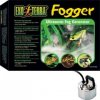James Bond
Well-Known Member
No Mr Bond I'm not into LED sales. Actually I'm an old school head who's probably been smoking pot more years than you are old. I remember 10-15 years ago when the big debate among indoor growers was Halide vs. HPS. For years growers wouldn't think of using HPS bulbs over Halides even for flowering. Now try to find an accomplished grower who dosen't flower with an HPS. I was recently laid off from a white collar job and haven't grown for years and am getting back into it. Bond the last time I grew herb the internet wasn't even up and running! So Bond since researching LED's and state of the art grow rooms, I've found that you are wrong about the High Tech LED's...They do work! Having the web to do research is a great tool and I've been waiting to see if someone on any of these forums has purchased any of these High tech LED's. So finally we are now beginning to see some real results...even 6 months ago when I started this research I wasn't considering an LED product...now my mind has changed. The inital start up cost is expensive and I believe the lights will pay for themselves in the long run...lower operating costs, no bulb replacement, no heat signature, no expensive ventilation. And with one good harvest the LED's i am considering purchasing, probably the LumiGrow, one good harvest will pay for the lights.
If the lights don't work shame on me for not listening to you and if they do...you lose! So the debate rages on LED's vs HID's???
I'm not into sales...I'm just a futurist.
And to the guy who bought the UFO... Return it and do some research on Real LED Products.
And the debate rages on...LED's or HID's
We will have to agree to disagree then. I hope it works out for you, but I sincerely don't believe you will get the results you want with LEDs.
Also, I am sorry to hear about you losing your job. I am getting laid off as well, Friday is my last day. I don't know if I would consider my job white collar, but I was making $50k as a draftsman and 3D modeler. Paid the mortgage anyways.











